Chapter 2 | TORNADOES
Exercise 1: While rotating flat ovals, move up or down on your paper. Let your hand gently slide over the paper on the side of your little finger and keep your wrist and fingers relaxed. Try to keep the ovals the same width. It now becomes a so-called helix.

In a tornado, that helix becomes wider towards the top and sometimes changes direction.
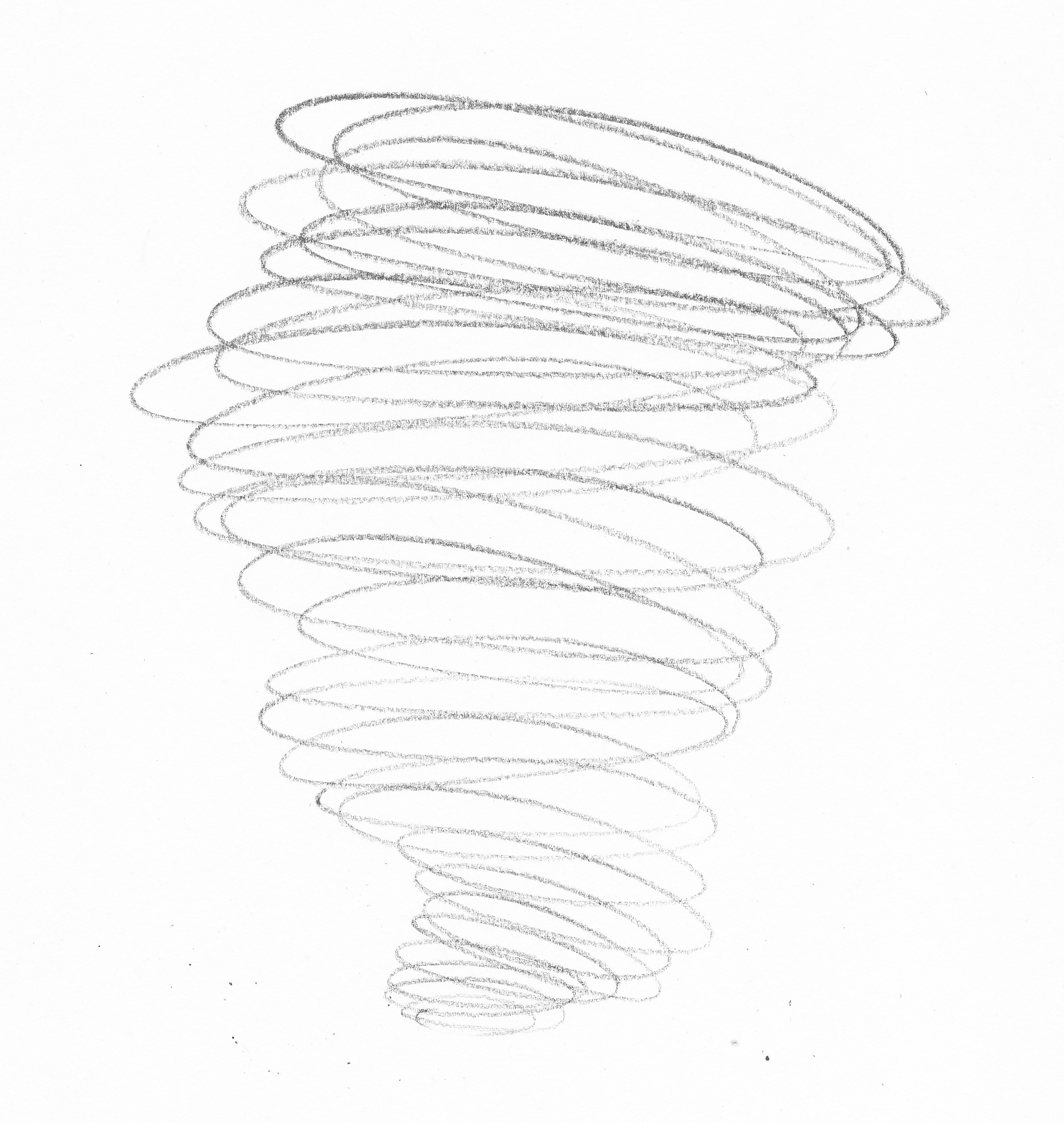
Exercise 2: Draw one or more tornadoes. Try small and big ones. Draw your tornadoes in one line, so without letting go of the paper in between! This way your drawing hand becomes increasingly flexible. If you like it, you can make up things that are thrown into the air by the whirlwind. Hopefully everything lands safely on the ground again.
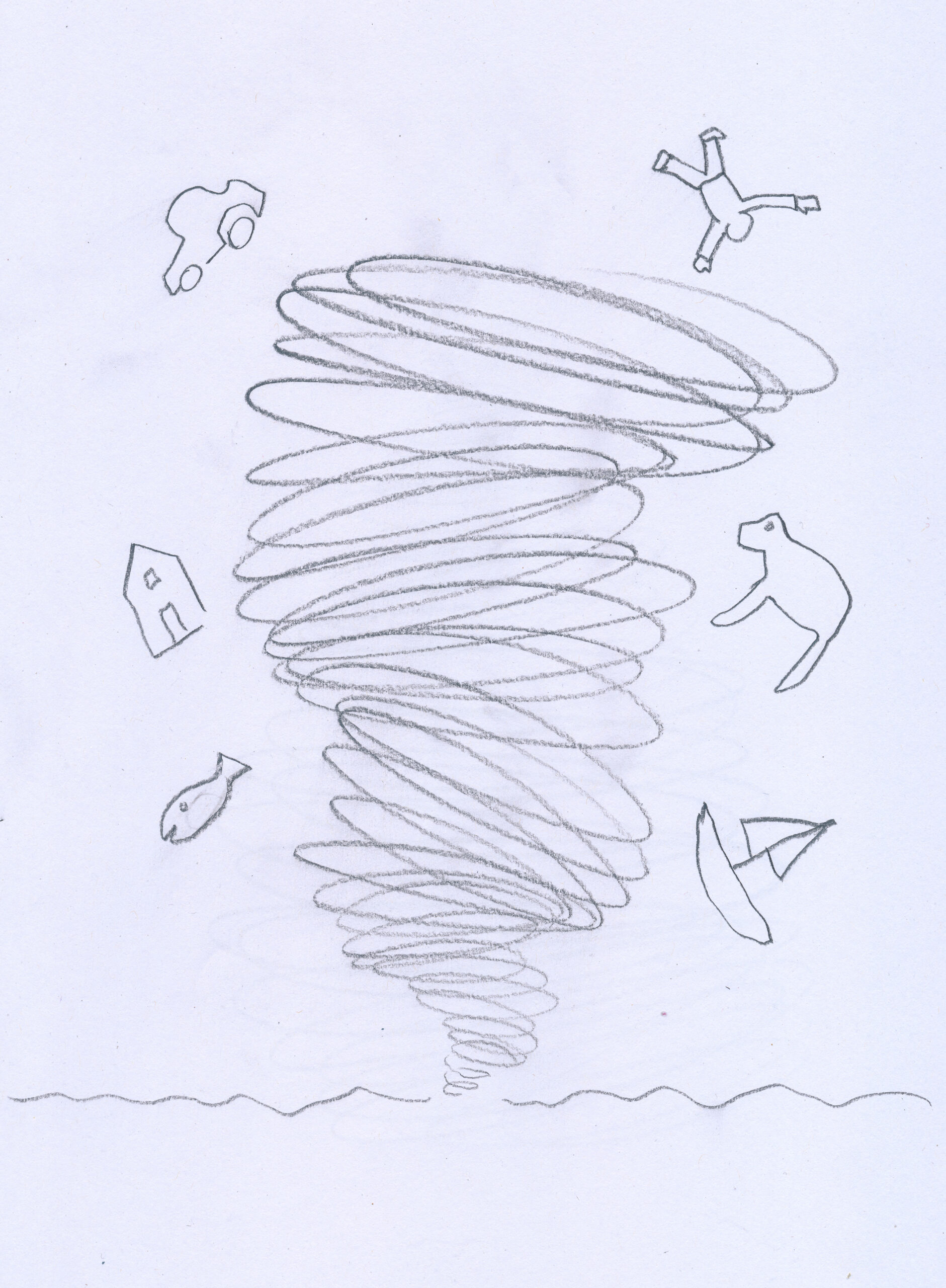
TORNADO FIGURES
The Tornado figure below has arms, legs and torso each made up of helices. For the egg shape of the head, the helix goes from small to large and small again.
Exercise 3: Tornado males and females are particularly nimble. Try to come up with some poses.
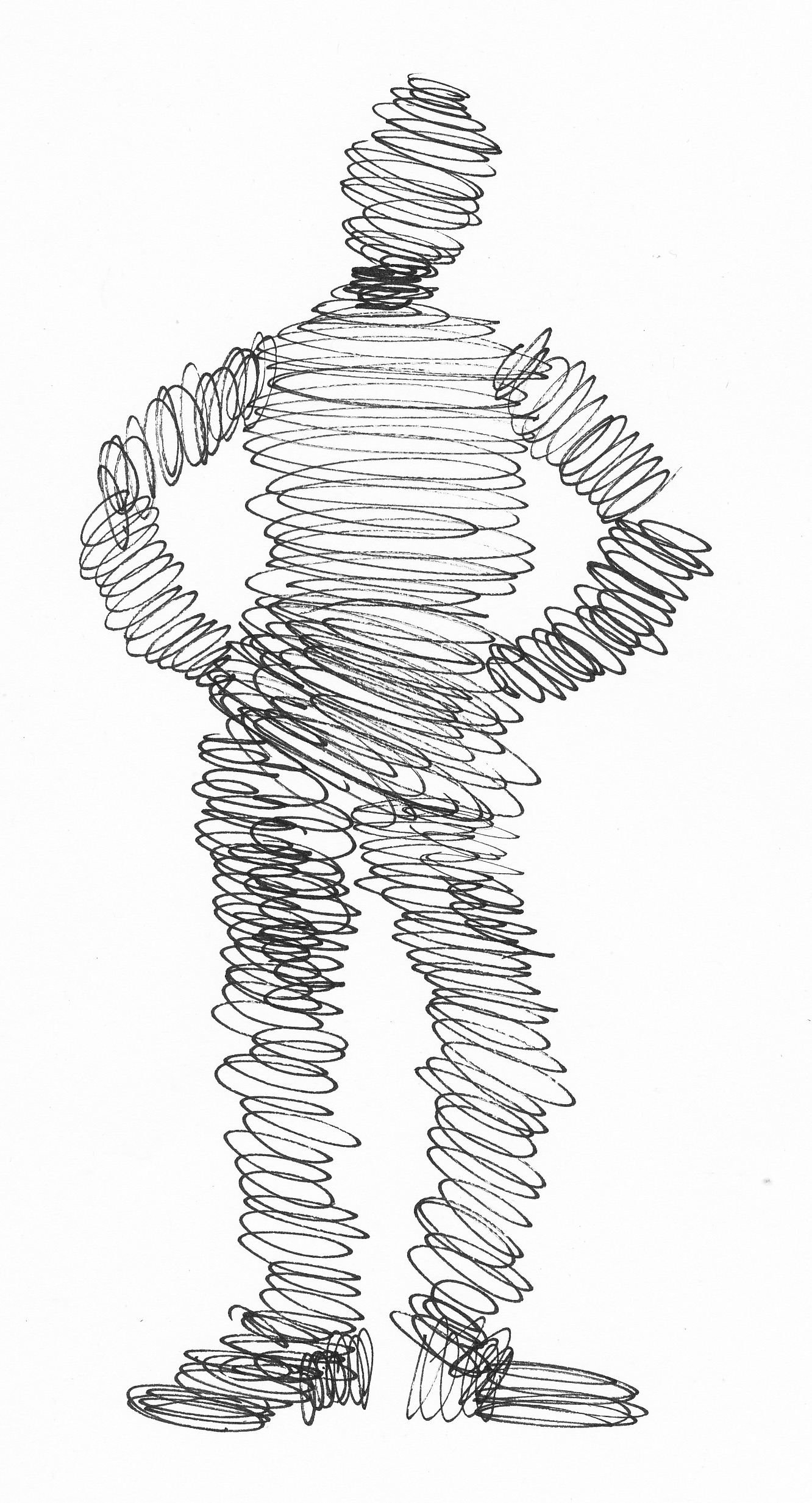
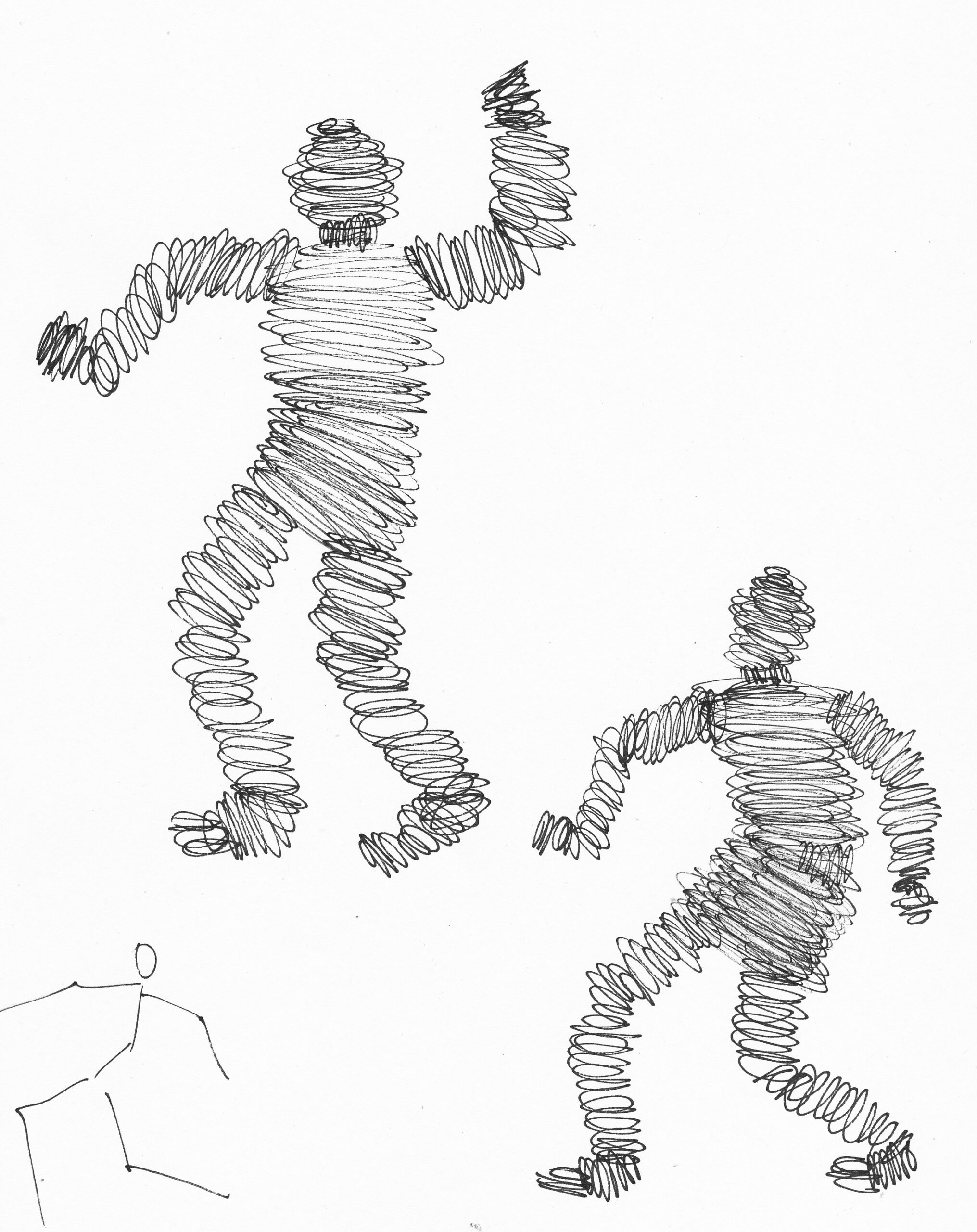
For screw threads, the ovals (connected in a spiral) must be drawn slightly diagonally and be exactly the same width everywhere, otherwise a nut cannot turn around them. With two vertical assisting lines you ensure that the thread is the same width everywhere. If you draw everything lightly in the beginning, you can then make the thread more real with some light-dark contrast and shadows.
Exercise 4: give it a try if you like to make such a technical drawing.
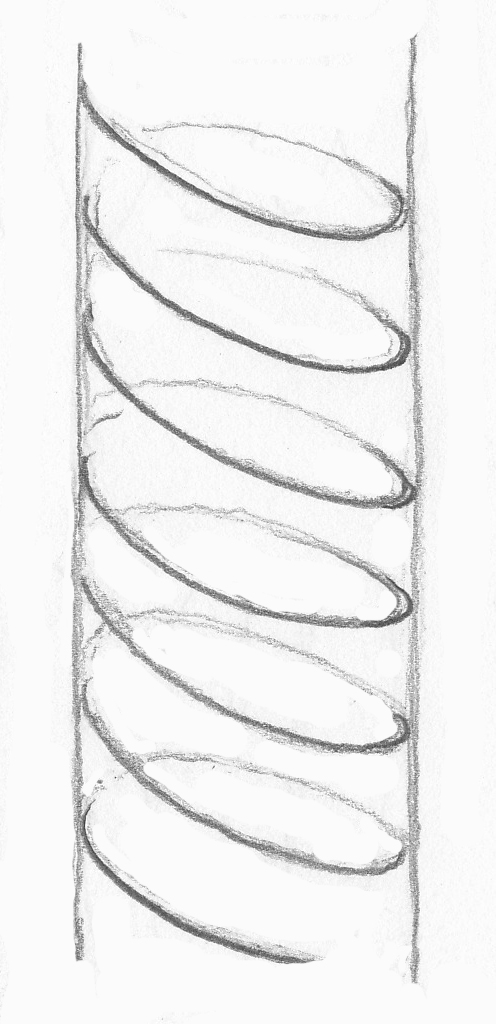
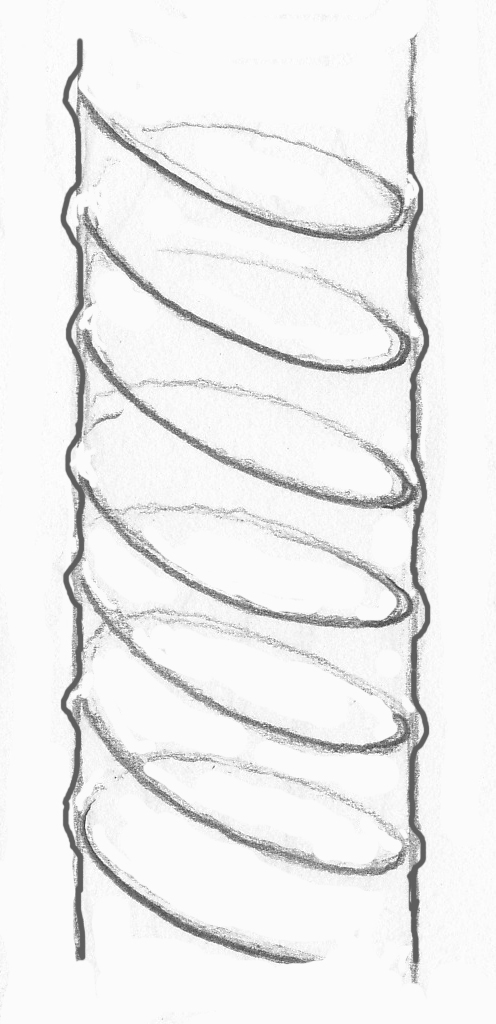
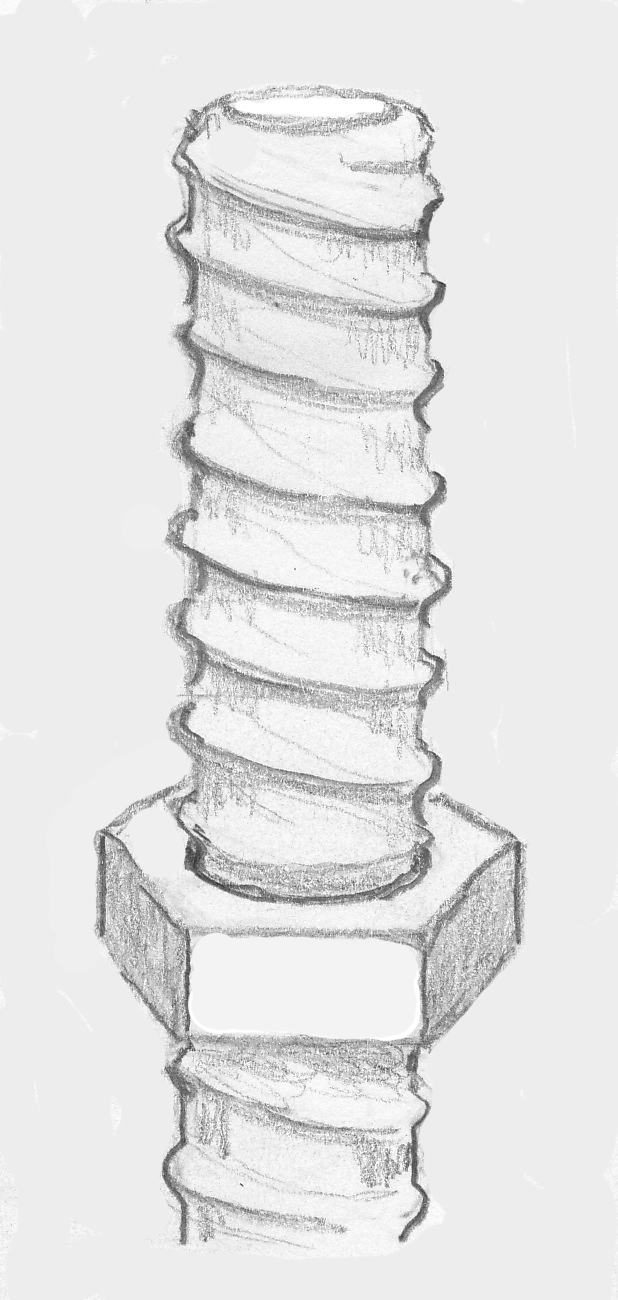
Screw threads